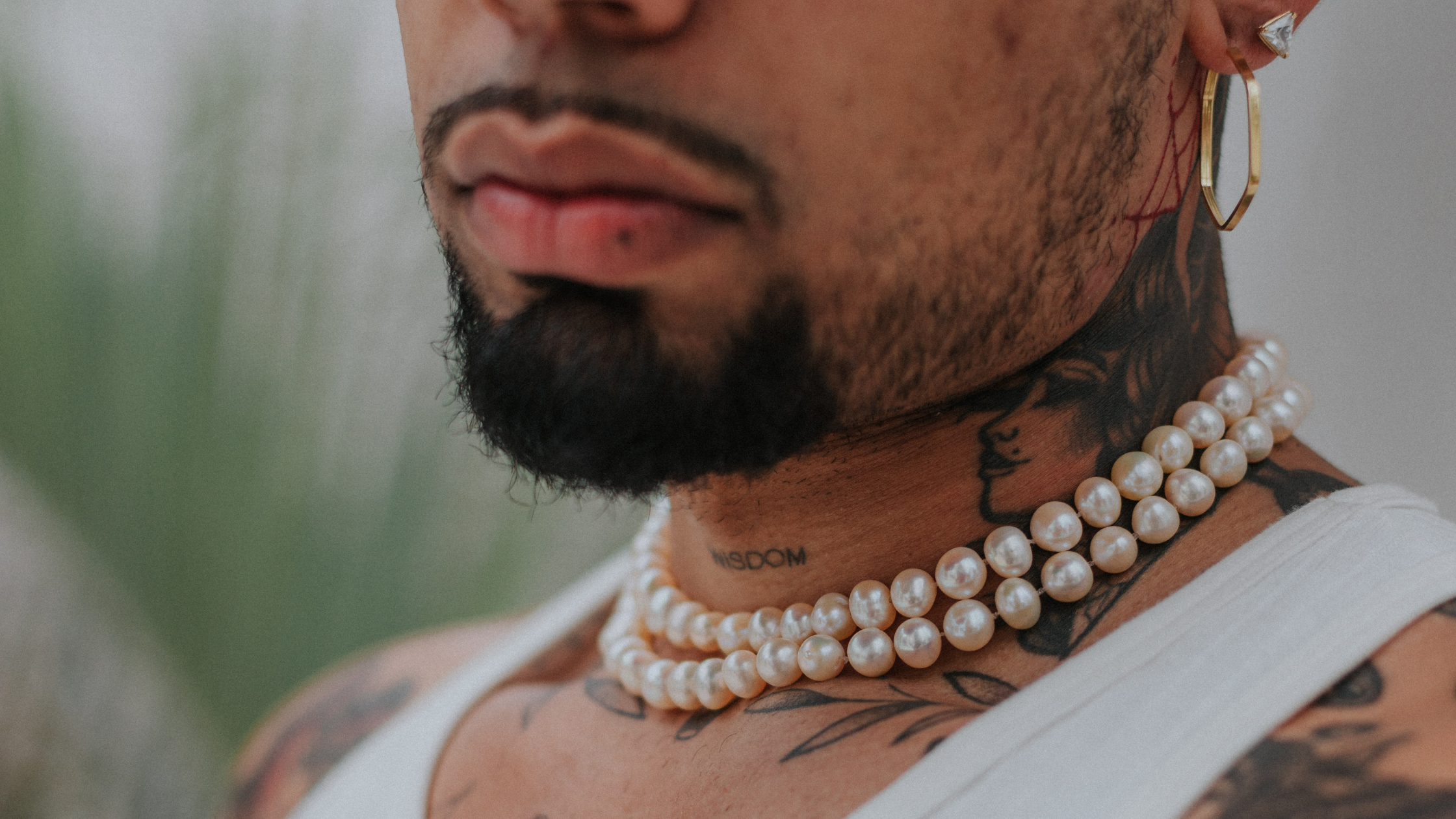
The Evolution of Men Wearing Pearls: From Royalty to Modern Fashion
Pearls have long been associated with luxury, status, and elegance. While in more recent times they have often been considered a staple in women's fashion, the history of men wearing pearls is rich and deeply rooted in global culture. From kings and emperors to modern-day icons, men have donned pearls to signify wealth, power, and sophistication. In the 21st century, young men are reclaiming this tradition, using pearls to make bold fashion statements that blend the old-world charm with contemporary style.
Ancient and Royal Significance of Pearls
Historically, pearls were not just seen as beautiful objects but were revered as symbols of divine beauty, wisdom, and power. In ancient Rome, pearls were a symbol of status reserved for the elite. Roman emperors would adorn themselves with pearl jewelry as a mark of their wealth and superiority. Similarly, in ancient India, pearls were associated with royalty and were often used to decorate crowns and ceremonial robes of kings.
Throughout the Renaissance, European monarchs, particularly men, embraced pearls as symbols of their divine right to rule. King Henry VIII of England, famous for his opulent tastes, frequently wore pearl-embellished clothing, from hats to shoes, to assert his authority and wealth. His daughter, Queen Elizabeth I, inherited this affinity for pearls, but her father was an early trendsetter for men wearing these precious gems.
Similarly, in Eastern cultures, pearls had deep symbolic meanings. In China, they were believed to bring good fortune and were often worn by emperors. In the Middle East, pearls were among the most prized possessions, a symbol of purity and wealth, often adorning royal men during ceremonial events. For centuries, men wore pearls to distinguish themselves as part of the upper class, showcasing their elite status in society.
The Decline and Shift of Pearls as Female-Oriented Jewelry
By the 19th and early 20th centuries, with the rise of the industrial age and changes in fashion sensibilities, pearls began to be marketed more as feminine adornments. With this shift, men’s use of pearls faded into the background, giving way to other materials like metals and gemstones that became more associated with masculinity. Pearls, long seen as symbols of class and refinement, were now viewed through a more gender-specific lens, aligning themselves with women’s jewelry collections.
This association grew stronger in the 20th century, particularly with iconic female figures like Coco Chanel, Audrey Hepburn, and Jackie Kennedy elevating the pearl’s image as a quintessential piece of women’s fashion.
The Revival of Pearls in Modern Men's Fashion
Fast forward to today, and pearls are making a bold comeback in men's fashion. The contemporary fashion landscape is more inclusive and experimental than ever, allowing men to break free from traditional gender norms. Pearls have found their way back into the male wardrobe, worn not only as a symbol of wealth but as a statement of individuality and fluidity.
High-profile male celebrities such as Harry Styles, Pharrell Williams, A$AP Rocky, and Shawn Mendes have been seen donning pearls at red carpet events and in everyday fashion. These modern-day icons are not only reviving an ancient trend but are reimagining how pearls fit into the narrative of modern masculinity. Instead of adhering to old-school standards, where pearls were reserved for royalty or strictly for women, young men today wear them as a form of self-expression and as a nod to a more fluid understanding of fashion.
Designer brands have also contributed to this revival. Fashion houses such as Gucci and Dior have integrated pearls into their men's collections, further solidifying their place in contemporary fashion. For younger generations, wearing pearls is not just about making a fashion statement; it’s about challenging societal norms, embracing personal style, and rejecting the rigid boundaries between masculine and feminine fashion.
The Cultural and Social Impact of Men Wearing Pearls
The re-emergence of pearls in men's fashion speaks to a larger cultural shift toward breaking down traditional gender norms. In a world where self-expression is increasingly celebrated, fashion is becoming a powerful medium for men to explore their identities. Pearls, once viewed strictly through the lens of class and femininity, have now become symbols of individuality, personal taste, and even rebellion against outdated conventions.
Moreover, this trend is not limited to celebrities and high fashion. More and more men across the world are incorporating pearls into their everyday wardrobes, from necklaces and bracelets to earrings and even clothing embellishments. It’s a clear sign that pearls are no longer confined to the jewelry boxes of women but have re-entered the broader cultural sphere as a versatile and unisex accessory.
The history of men wearing pearls is a fascinating journey that spans centuries, cultures, and evolving social norms. From the royal courts of Europe and Asia to modern-day fashion runways, pearls have been symbols of power, status, and beauty for men and women alike. Today, as young men embrace pearls once again, they are not only paying homage to the past but are also forging a new path where fashion knows no boundaries. Whether worn for elegance, rebellion, or self-expression, pearls are reclaiming their place in men's fashion, proving that luxury and style transcend gender.




